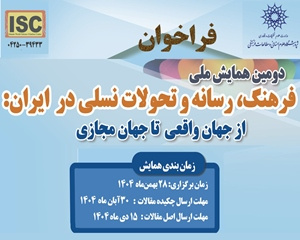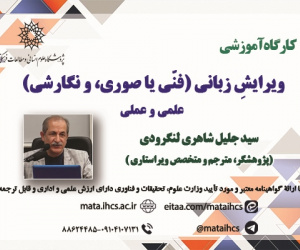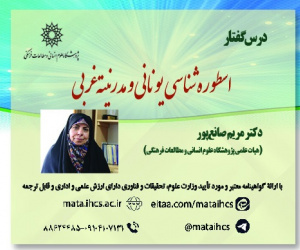گونه شناسی معماری و الگوی پراکنش کبوترخانه های حوضه آبریز رودخانه زاینده رود، در شهرستان فلاورجان و مبارکه (مقاله علمی وزارت علوم)
درجه علمی: نشریه علمی (وزارت علوم)
آرشیو
چکیده
کبوترخانه گونه ای شناخته شده در معماری ایران به شمار می رود که محل گردهم آوردن و نگهداری کبوتران، برای تأمین کود کشت زارها بوده و در ارتباط مستقیم با مردم و معیشت کشاورزی ساخته و پرداخته می شد. در طول تاریخ، فرهنگ بهره برداری از این گونه معماری در فلات مرکزی ایران، بویژه استان اصفهان متداول بود و امروز جزئی از منظر میراث کشاورزی پیرامون شهرها و روستاها را تشکیل می دهد. در حاشیه و حوزه آبریز زاینده رود، شمار قابل توجه کبوترخانه در پهنه های کشاورزی شهرستان های فلاورجان و مبارکه، واقع در جنوب استان اصفهان برپاست. مکان گزینی بیشتر این گونه بناها در محدوده کشت زارهاست، اما امروزه به سبب دگرگونی در شیوه های کشاورزی متروک افتاده اند، از این رو خطرات روزافزونی آن ها را تهدید می کند. بر اساس بناهایی که برجا مانده، پاسخ به پرسش از نحوه پراکندگی و الگوی معماری کبوترخانه ها در مناطق مورد پژوهش پی گیری می شود. با این هدف که ارتباط محیط و اجتماع مناطق کشاورزی بر کبوترخانه سنجش شود. روش پژوهش «تاریخی توصیفی» است. بخش عمده داده های پژوهش از راه میدانی و با مشاهده و مستندنگاری هر یک از بناها حاصل شده و مطالعات کتابخانه ای باقی داده ها را تشکیل می دهد. تحلیل های آماری با استفاده از نرم افزار GIS انجام شده است. شمار 33 کبوترخانه در شهرستان فلاورجان و 15 تا در مبارکه شناسایی شدند. کبوترخانه های موجود دست کم به 7 گونه معماری تقسیم می شوند. که شامل برج های یک استوانه ای و چند استوانه ای است. الگوی غالب کبوترخانه های فلاورجان از گونه یک استوانه ای و در مبارکه استوانه ای گونه یک و مجموعه چند استوانه ای و چهار استوانه ای است که هرچه از فلاورجان به سمت مبارکه حرکت می کنیم پلان برج ها متاثر از مبارکه و به صورت به مجموعه چند استوانه ای و چهار استوانه ای تغییر پیدا می کند.Typology of Pigeon tower in the Zayandehrood River Catchment (Case Study of Falavarjan and Mobarakeh Cities)
The pigeon house or pigeon tower, as the name implies, is a place for the living and offspring of the pigeons and as a kind of indigenous Iranian architecture and a functional, historical monument has gradually found its position in various parts of Iranian architecture. These monuments were initially constructed just as a very small part of a larger architectural complex with the purpose of military and security exploitation of the pigeons residing there to communicate or exchange messages and news in specific circumstances.Due to the location of a significant number of mentioned buildings in agricultural farms and the increasing risk of their destruction, it is necessary to conduct basic studies and explain their special place in the history of Iranian architecture in order to preserve and introduce them. Based on this, it seems that the mentioned buildings have been a kind of reflection of the social class and the conditions of the society around them in terms of form, structure, and dimensions. Therefore, in order to examine the relationship between architecture and the social class that governs each region, the authors have studied and classified them. In this regard, in the first stage, they have documented the mentioned works, including preparing photos, designs, required maps (plan, facade, section) and obtaining initial information from the mentioned buildings based on field visits to Dovecotes in the study area and then they have proceeded to prepare a scattering map and analysis of the architecture of the dovecotes. With the use of GIS science and its software, steps have been taken to achieve real scientific results. Based on the information obtained from the mentioned buildings and their location, the question arises that what is the relationship between different farming communities and the structure of dovecote formation? And how can this connection be explained? Given the existence of a class system governing society (master-peasant) in the Middle and Late Islamic periods, the authors plan to use archeological studies to study the formation of dovecotes in different areas, assuming that the creation of dovecotes in various dimensions and structures in different parts of the country depended on the ruling class in that region.








